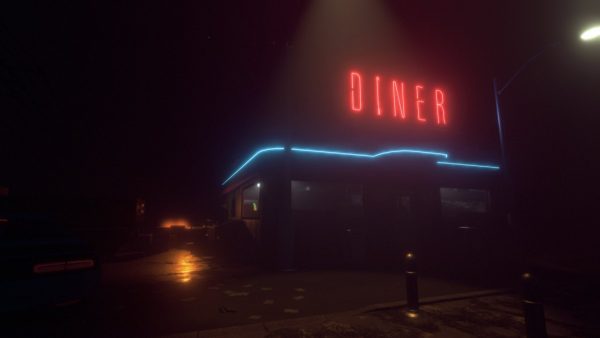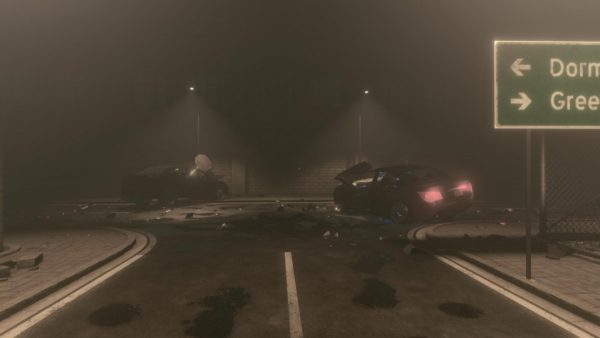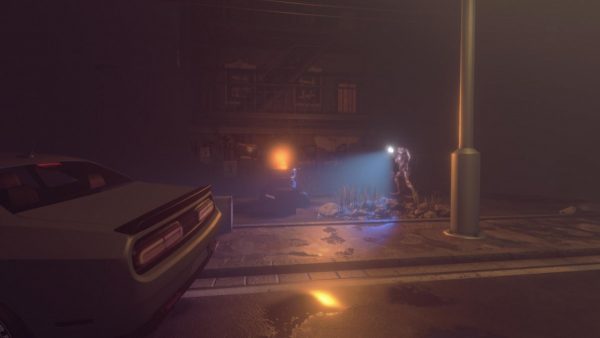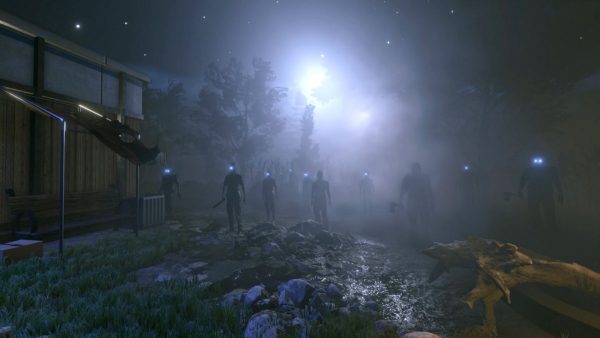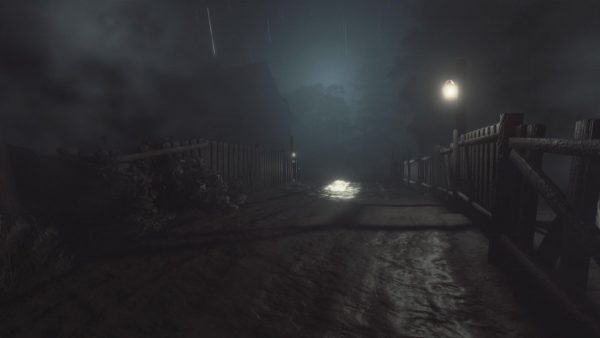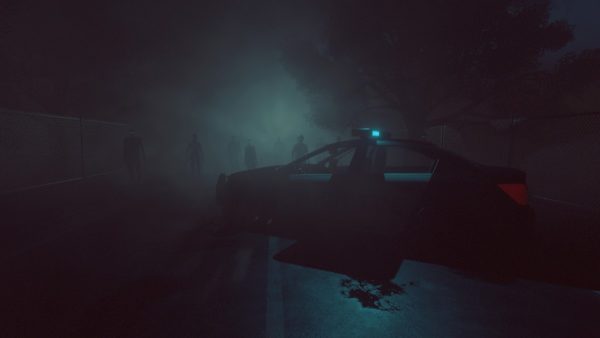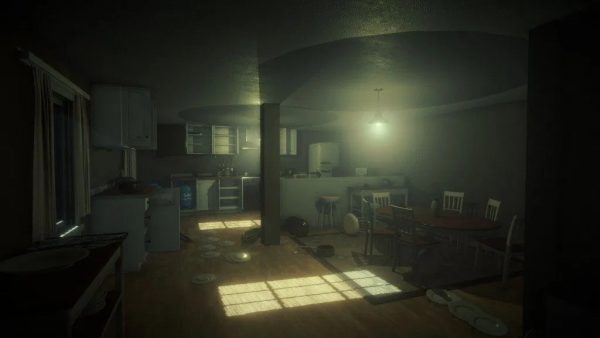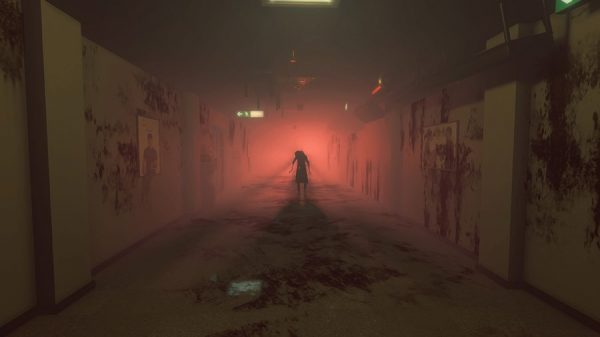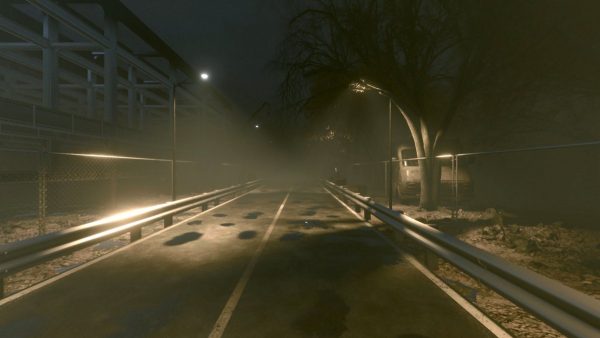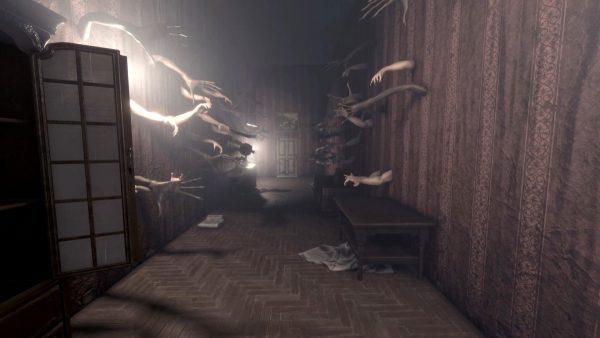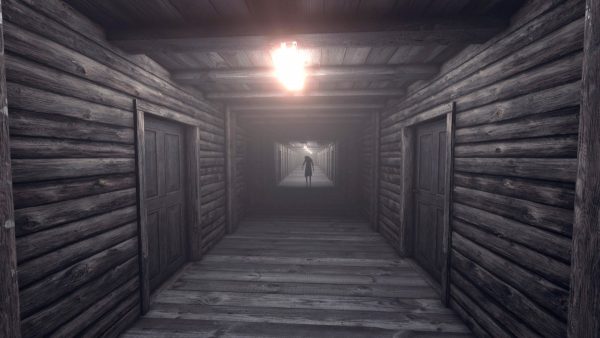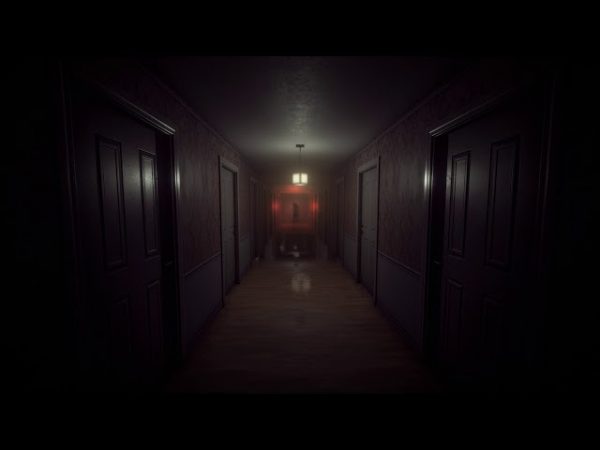Red Stewart reviews Those Who Remain for PS4…
Oh what a joy the indie market is! This is a place where game development is (mostly) free of overwrought media coverage, pointlessly-extravagant graphics, and the toxic desires of fans. And it is here that I find myself discovering, playing, and ultimately enjoying Those Who Remain, despite its technical and narrative drawbacks. That’s the short answer, for the longer answer read on.
To be clear, I wasn’t completely unaware of Those Who Remain before I booted up the review code. A week or so prior to playing it, I was given the opportunity to interview the developers, Camel 101, and in preparation for said interview, I watched demos. These brief glimpses gave me some presumptions that turned out to be either half-true or outright wrong and, as a result, I now understand something that I feel all gamers should consider when checking out upcoming (or even past) releases: seeing something and actually experiencing it are two very different things in the world of video games. What may look like a tiring gameplay endeavor could very well be enticing when you have the controller in your hand.
I mean it when I say that that was the case with Those Who Remain. On the outset, the story looks like another Silent Hill clone: you play as Edward, a recently-divorced man who arrives in a town called Dormont to break-up with his girlfriend, only to discover the entire place devoid of humans, shrouded in darkness, and full of hostile phantoms. Who are they and what is going on? It’s up to you to figure it out.
While the premise is no doubt familiar, where Those Who Remain differentiates itself is in its narrative pursuit: it’s more interested in having Edward caught up in another mystery than his own personal turmoil.
We’ve all played horror games whose stories are driven by the main protagonist suffering from demons: Silent Hill, Dead Space, Amnesia, Layers of Fear, etc…Part of the reason this is done is because it quickly allows gamers to invest in that character’s arc: we can all empathize with personal suffering because no one has lived a life without sorrow or regret.
And that’s a perfectly fine thread to follow, but it does have its drawbacks, namely that the side characters tend to be shortchanged in favor of the solo journey. I don’t think many people can name the secondary NPCs in the aforestated titles for example.
Those Who Remain, on the other hand, reverses this formula: Edward’s internal qualms are shoved to a B plot in favor of focusing on what happened to the residents of Dormont, specifically a young girl named Annika and her mother Erin, and it is through doubling-down on this decision that the writer, Ricardo Cesteiro, elevates Those Who Remain’s synopsis above its fellow indie horror titles. As I moved through every location in Dormont, I became genuinely interested in not only the backstory of the town, but also in what transpired to leave it so desolate.
These answers are carefully divulged via various types of stationary, including: letters, diary entries, newspaper clippings, and hastily scrawled messages amongst others. The best part is none of them ever feel deliberately vague or vexatious like the entries in Braid or Amnesia; they disclose just enough information to satisfy your curiosity, while also leaving out enough info to justify continuing your search. In addition to this, Edward gets extra clues through encounters with an apparition of Annika and an unnamed humanoid figure wearing a skeletal mask. Both drop tidbits of knowledge and advice that expand upon the mythological nature of the world, as well as their own characterizations.
I cannot stress enough just how well-done Camel 101’s approach to storytelling was. I have stated in the past that horror games rest their appeal on being intriguing mysteries that simultaneously make the truth fearful and alluring. It can be difficult to pull this off because, as a developer of a horror game, you want to scare people with a dread of the unknown, but also give that “unknown” a tangible factor that can be peeled away to reveal a satisfying conclusion. That is the case with Those Who Remain– every note or notice you find, every conversation you have with Annika, and every supernatural being you encounter slowly explains the axiom of what is going on, culminating in a mostly-fulfilling finale (more on that below).
But not everything about the story is good. I mentioned before that the switcheroo done with the narrative intent provided a big pro in the form of fleshing out the other characters, but that altered fixation consequently makes Edward himself one-dimensional. We learn about Edward through occasional flashbacks that gradually disclose a key tragedy in his life. These glimpses into his past aren’t intrusive, however they have a major fault in that they just don’t feel all that connected to the main storyline. I’m under the impression that Cesteiro intended for Edward’s depression to be his link to the ghosts of Dormont- that by containing all this guilt, he unintentionally opened himself to this netherworld.
It’s not a bad concept, but its hampered by a couple of big problems, the first being that Edward conveys no emotional reaction to the specters, their murderous aggression, or the fact that they’re clearly unnatural monsters that have come out of nowhere! Compare this to the scene in Spirited Away wherein Chihiro breaks down in tears over her encounters with the Kami spirits, or Rose’s panic attack upon discovering a room full of corpses in Close to the Sun, or Ezio’s nervous delivery when Uncle Mario discloses the assassin brotherhood to him in Assassin’s Creed II. Heck, Jason’s personal mutterings in Far Cry 3 feel like a Hamlet-level soliloquy compared to the level of apathy Edward displays here.
Now, I know there are people who will counter this by bringing up BioShock, and it’s true: BioShock had this same issue wherein Jack didn’t respond to the post-apocalyptic scape of Rapture, or its insane citizens. However, I will counter by saying that Irrational Games circumvented this through a few tactics: one, making Jack a silent protagonist, two keeping Rapture an enchanting metropolis, and three, incorporating a genius plot twist that tied every question together.
Edward has no such luck here. He speaks semi-frequently, during which he expresses (inconsistent) logical thoughts about his predicament, so he’s clearly normal; Dormont is a series of stock buildings you could find in any local township, making it relatively common-looking as far as settings go, and there’s no twist down the line wherein we find out Edward is directly or indirectly connected to the phantasmagorical phenomenon (sorry for spoiling a non-spoiler). He is an Average Joe who happens to get caught up in this nightmare. Assuming Cesteiro wanted there to be a metaphysical bond between Edward’s bleak state and the dark creatures, I personally don’t think he succeeded, though I acknowledge opinions will vary here.
The second is the resolution to Edward’s melancholy. See, in deciding to have dual story threads, the developers of Those Who Remain were left with only one option: conclude them both at the same time. Annika’s, as I stated above, is done well, but I used the word “mostly-fulfilling” for a reason: Edward’s isn’t. It’s rushed and confusing, traits made worse by the fact that two of the three endings don’t address it at all. Which is a shame because, in the beginning of the game, there is a disclaimer that asserts Camel 101’s support for mental health awareness. It’s clear that they had greater aspirations with Edward’s odyssey, but it wasn’t executed well in the final product.
With the story covered, I have to move onto the graphics. Artistically, Those Who Remain is reminiscent of the Art Deco style with all its good and bad aspects. The plus side is that it succeeds in evoking an eerie framework without needing to pump its models full of thousands of polygons. What I mean by this is Deco allows a graphic designer to take a normal-looking place and, with a few tweaks, completely turn it into a frightening rendition of itself- standard Deco has contrasting bright and dark colors, simple shapes, and a combination of manmade and natural materials, while macabre Deco can have contrasting brightnesses for dark colors, ugly-unnatural shapes, and a combination of manmade and natural materials.
You see what I mean? You can keep the components the same; simply darken the hues and mix up the contours of the world’s elements and you have a new vision. A house in Dormont, for example, will look like a regular home: you have yellowing wallpaper, a grey/brown color palette, and furniture that looks like something you’d buy from Ikea. Then comes a flip- it could be caused by any number of occult circumstances, but, when it happens, it changes things completely by slightly manipulating the look of the environments: now you’re in a red/orange palette, the doors are shaking uncontrollably, chairs are shifting in ways that they shouldn’t, the general life aura is odds with itself. At a time when big companies are going to great (and potentially-expensive) lengths to create different aesthetics, here Camel 101 has found a way of taking their preexisting style and marginally adjusting it to put players on edge.
None of this is even talking about the adjacent dimension Edward is frequently forced to enter, which takes the aforestated approach and turns it up a few degrees! Instead of an ordinary abode you are now in some strange plane of existence: gravity is selective, sending household property floating or flipping it upside down; wan motes of foreign origin float harmlessly around you; the plaster looks newer than you swear it did before, and a spectral blue tint bathes the areas around you. Really creative on Camel 101’s part.
But just like with the story, there are flaws. If there’s one big drawback to Deco, it’s that it’s very easy for it to make something look plasticky by way of improper texturing, and that’s the case here. Outside of a few walls in a diner you visit, every single object, material, person, monster, and piece of architecture looks VERY inconsistent upon closer examination, ranging from irregular lining to outright blurriness. Perhaps the developers thought that, because the game was set at night, there was no need to put significant effort into rendering the finish of Dormont: the dim illumination you have to deal with for the vast majority of Those Who Remain does admittedly make the vistas around you less scrutable than a typical video game.
As a critic, I am required to examine the deeper minutiae of a hub or environment because reviewing something means reviewing every component of it in order to both, 1) give consumers as hypothetically great an understanding of the individual components of a title they could be potentially interested in, and 2) highlight/disapprove the quality of said individual components.
However, as a gamer walking through a terrain, how much will I honestly care? Rockstar’s Red Dead Redemption 2 is praised for its technical marvels, the dynamic weather and lighting being at the forefront of that acclaim, but would someone have really cared if those systems were downgraded? As long as the “magic circle” of immersion isn’t broken via bugs, will people walking through an open world care if something is elaborate in its composition? It’s an interesting question.
I personally love minor details, and have worked to acknowledge them in my past reviews when I feel a company has gone out of its way to do a feat that would otherwise be overlooked, but am I being condescending of the masses by thinking that they would innately fail to notice said features? Isn’t PC gaming as a whole built on trying to maximize graphical output? Don’t programmers spend hours creating mods to bring older titles into the modern era? And can you not find hundreds of comments on any given game commending it for its computer-generated triumphs?
Whether we’re talking AAA, AA, or indie, it’s a tough question. Do you allocate budget and resources (and consequently risk crunch-time) towards graphical and artistic achievements, or do you concentrate on the story and gameplay? The Unreal 5 trailer released this year sparked the imaginations of fans everywhere, but is not the PS5’s purported ability to eliminate load times its biggest appeal among prospective buyers? What do players prioritize? Do those prioritizations even have to be zero-sum?
I would love to see a Pew Research-type study on player predilections with regards to this category, but as of now I can only say that this ultimately comes down to personal preference. And for me, I do pay attention to these smaller facets of a video game, even as a general gamer, and Camel 101 let me down here. I know indie companies have their monetary limits, however the sheer amount of bad texturing left me scratching my head. Why did it turn out this wrong?
Possibly, it was because the team wanted to focus on filling their areas with detail. To clarify, Those Who Remain involves you exploring what could be called “levels,” depicted as buildings in or around Dormont. Successfully completing these places requires you to do multiple tasks that I’ll talk about more below, but I bring it up now because, by Jove, did Camel 101 pull out all stops to make these empty locales feel like they were once alive with a civic populace and economy.
We’ve all played adventure games in the past that are filled with generic handiwork: a supermarket has shelves of fuzzy colors and simulacrum meant to represent bread, milk, cheese, and other grocery products; a construction yard has random mounds of gravel sidelined by generic vehicles like dump trucks, concrete mixers, and road rollers; a church has bench seats and some carelessly-fashioned stained glass in the background behind the plain altar.
Those Who Remain, being a replica of a small town, contains those same venues (and a lot more), yet every single location is packed to the brim with accessories and memorabilia that go beyond the parameters of game design. The very first site you arrive in, for example, is a cheap motel. The “lobby” (if you can call it that) isn’t just a reception desk with keys hanging to the side: it’s a mini space that was clearly personalized by its unseen clerk. A radio blasts country music, crumpled pieces of paper lie around the ledger, magazines with actual names are stacked up, pictures of illustrated vistas adorn the walls, there’s a diploma laden with a specific title, an adjacent room contains a pin-up girl, beer cans on the ground, and a television propped up on a stand in front of two chairs. I’m sure I am missing many more features. The point is this is not a simple blueprint of any old motor lodge; it’s a distinct one that only exists in the area outside of Dormont.
Now, envision this level of variety in a number of other locations ranging from a fire station to a library to a hospital and you’ll get an idea of the effort Camel 101 put. They cared about giving this literal ghost town a former life, a life that was the collective mindset of many distinct folks. It reminded me a lot of Gone Home, another indie release that saw you exploring a house full of precisely-crafted keepsakes, relics, and souvenirs.
However, as meticulous as this design is, it did lead me to think about another “philosophical” issue with game development, which is the concept of graphical extravagance in relation to expected player interaction. What I mean is, how much time should a company place towards filling an area with detail if the player is not going to be there much? For example, talking about that foyer I enumerated about, you will only be required to visit it for a minute at best- you go in, get the key to Edward’s girlfriend’s room, and depart. That same pattern applies to the other edifices Edward has to get through.
In some ways, this is a battle of extrinsic motivation against intrinsic motivation: extrinsically, you only have to be there to retrieve a key, intrinsically, you want to stay there because of a personal interest in finding out more about Dormont by way of the visual cues around you. Personally, I don’t think relying on intrinsics was a smart decision by Camel 101. For starters, Those Who Remain is a horror game, meaning an unsettling atmosphere can only be maintained for so long- goading players into staying in one place for an extended period of time purely for observational sake will make them feel “safe,” hurting the potential of the fear factor. And that was what sadly happened every now and then, but more on that in the gameplay section.
Secondly, Camel 101 doesn’t throw any bones to reward exploration. You don’t get any extra reports or news segments about Dormont; everything the developers want you to see you will see in your first run through a room. Sure, a photograph here or there may give you a clue about that occupant’s prior career, but it doesn’t do anything for the story as a whole, making it relatively pointless.
I know I championed for more graphical details above, but the saying “less is more” applies here. I would rather have had less rooms with more hidden secrets to uncover than multiple chambers that don’t serve any real purpose.
I’ve raved enough about the graphics, and will now move onto the lighting. As much as I hate to be a negative Nancy, I was not impressed. Lighting is a core component of Those Who Remain because coruscation is the only way to disperse the dark phantasms that block your path: whether it’s flipping a switch, activating a generator, or utilizing headlights, you need beams to progress. The problem with the luminescence here is it’s built off of pre-rendered, static projection.
Let me explain it this way- when you turn on lamp and proceed to back away from it further and further, what happens to the rays? They get increasingly dimmer and dimmer, because that is how light works per the relativistic Doppler effect. In Those Who Remain, the radiance from a beacon has a set circumference: if you are not in that circle the screen will be dark with a glare in the distance, whereas the second you enter it, your field of vision will suddenly become brighter. This has the unintentional effect of making most of the environments caliginous, even if you have activated some light sources, which in turn impacts the game in a couple of ways. One, it becomes harder to see drawer and desk handles due to them not sticking out, and two, it hurts the immersion because there will be parts of a room shrouded in shadows, yet no enemy will be there because they are not meant to be there once the light is on (and these ghosts technically have the ability to instantly appear anywhere there isn’t strong luminescence- even stuttering fluorescents won’t keep them at bay!).
Besides these complaints, the light does serve its purpose- it’s not like it will be completely distracting. If there’s one thing I can praise, it’s that the shine effect on metallic surfaces looks very good: beams spread and become oily-looking if you move behind a steel bar or iron fence. Also, the alternate sphere of existence you pass through does appear better courtesy of a blue filter put over the camera that lights everything up (though on a side note, those azure portals to access the dimension are extremely bright!).
Sound is next, and luckily it’s the true showcase of Those Who Remain. Starting with the SFX, I can proudly say that we have one of the best modern horror sonorities in video game history. Camel 101 has done away with the cliche noises we’ve come to expect from the genre- echoey footsteps are minimal, drum accents are gone, and creaking wood and window panels are significantly diminished. What you have instead are everyday sounds you hear from walking around inside or outdoors: the soft rush of the wind, a door shutting, a thud in the distance, the static from a computer, the rustling of grass. Camel 101 has taken these pieces of ordinary audio and tuned them into something subtly terrifying.
It hard to describe, but you’re essentially in a position where you’re constantly anxious. Because the buildings are regular urban structures that walk the line between familiar and unfamiliar, these mundane sounds become expressions of a warped normality. You know there’s something very wrong with Dormont, and the idea that something non-logical is causing these babels is inherently disquieting. There are some rehashed effects (opening any cabinet yields the same screechy din), and the aforestated Doppler effect applies here as well (a radio broadcast won’t be discernible until you penetrate its predisposed perimeter), but neither of these are too noticeable. Plus everything is synchronized very well, so there’s no unintentional crash or swap.
The voice acting is next and begins lousily. A game resting its narrative on the sojourn of one man warrants the main actor to perform, and Edward’s VA Joe Bianco doesn’t do that, at least not consistently enough. Most of his delivery is very monotone no matter the specific situation, and so there’s a congenital woodiness to his lines. It’s not a steady trend, and he does succeed on some emotional beats here and there, but because it’s not constant, I cannot commend these singular instances of proficient oration.
Now, how much of these quibbles rest on Bianco’s shoulders I can’t say for certain. I spoke at lengths above about my problems with Edward’s character and how the script doesn’t give him much moments of humanity. For the majority of my playthrough he truly did feel robotic with his shortage of reactions to the hellscape of Dormont, so I know Bianco didn’t have much to go with in that regard. And he does show sparks of potential in certain scenes, so who’s to say it wasn’t just improper directing? However, the artists below weren’t hampered by the latter, so again, who knows.
Nola Klop plays both Annika and her mom. Despite having two characters, she’s arguably given less to work with than Bianco courtesy of their sporadic appearances, but she still makes the most of it. For me, she shined as Erin due to the sheer amount of pain she was able to channel in her intermittent moments. Annika, on the other hand, had a half-innocent, half-guiding act that wasn’t quite as balanced as I would have liked, with Klop’s articulation often leaning more towards the former.
Then, you have Brandon Fague as the mysterious “masked man,” and he is the stand out of Those Who Remain’s cast. Playing an omnipotent-type figure, Fague has the task of also doing a balancing act like Klop. The Masked Man is an entity who is aware of the virtues and sins cast by the characters in the game, yet chooses to separate himself from the morality of mortals. He summarizes sections of the game’s backstory superbly, divulging this information to you with a tinge of sardonicism kept in check by a genuine objectivity. I honestly wish he had had more scenes in Those Who Remain as I thoroughly enjoyed Fague’s elocution.
Lastly, there are an assortment of other NPCs Edward meets along the way, but the truth is the voice acting for them ranged from subpar to awful. It ironically reminded me of a lot of the side characters you hear conversing in the background of big titles like the Assassin’s Creed series- as though some strangers were pulled off the street and asked to quickly record some dialogue.
The OST, credited to João Mascarenhas, is a bag of assorted quality. The music itself is very good, bringing a somber consonance to the tragedy of Annika whilst avoiding sharp crescendos that have been overused in horror media to the point of parody, but it’s held back by some factors. To start with, whole tracks are implemented sparingly, only appearing when a cinematic moment in the story necessitates it. Instead, you have mostly silence broken up by a sprinkling of, what could be called, leitmotifs, triggered by the same stimulus. Whenever those unearthly dark figures are within your vicinity, the same abnormal choir-esque warble resonates. Whenever you are being chased, the same thriller chorus plays. And whenever you are in the negative zone, the same grating violin (viola?) strings along in the background (and personally, I wasn’t a fan of this theme in general, finding it more vociferous than ominous).
As you can tell, it does get old quick, and affects the terror element since you become familiar with the rehashed cues. Those moments when Mascarenhas and his collaborators are allowed to bring their entire symphonic talent to fruition is when the game shines musically, but alas it’s deliberately done sparingly because of an intentional order from Camel 101. I know this because, in my interview with them, they told me as such, so I can’t really fault Mascarenhas for his lack of output.
I also know from my interview that I wrongly accused Those Who Remain of being a walking simulator. I would like to apologize to Camel 101 for making that assertion (though I should clarify that I don’t use the term in a derogatory manner, having enjoyed a number of these games such as the aforestated Gone Home). Those Who Remain isn’t a walking simulator because it does have methodical mechanics that demand you do more than just explore. I touched on the gameplay above in the lighting section, but honestly there isn’t too much more I can expand upon- the whole premise of Those Who Remain is that Dormont has become eclipsed by a blackness, this tenebrosity providing a haven for the equally-onyx spirits. Because of this, Edward has to create pathways of light to disperse them or risk an instant execution. The enemies do not move, opting to stand as a unit with a slight waver. There are other creatures that are mobile and give you chase, but these are sparse and presented as more cinema-esque in scope, thus not turning the game into a “running simulator” ala Outlast.
This system works as far as puzzles go, with Camel 101 putting a decent amount of diversity into each arena. The big entrances may have easy-to-access light switches, but there are just as many areas where you will have to put two and two together to get some decent effulgence going. Granted, most of this does come down to finding the right item and using it with the right prop, but only once in my playthrough did it get tedious.
Even when you do create light, this isn’t like Luigi’s Mansion wherein a lit chandelier means everything is safe- Camel 101’s biggest accomplishment is keeping its horror atmosphere intact even as Edward slowly brightens things up within his radius.
The gameplay does start to change-up during the second half wherein riddles and even platforming are incorporated. It’s kind of a shame that more adjustments weren’t thrown in the first half as it not only prevented me from becoming acclimated with the game, but also made things more fun and allowed Camel 101 to tap into their mythos more.
A bigger shame goes to the ghost world, which never reached its potential from a gameplay perspective. There’s this idea of interconnectivity that Camel 101 briefly dabbles with wherein what you do in one dimension affects the other, but it amounts to the same black/white causal effect as seen in Spider-Man: Edge of Time. It’s purely linear-driven, with Edward jumping into it to find a way around an obstacle in his reality. I was also unsure of the time displacement component to this whole shebang: at first it seemed like the blue zone represented Dormont in the past, but other instances seem to show a possible future (the food mart comes to mind here), while still others indicate it’s a shattered mirror version. Maybe that ambiguity was the point; irregardless, I wanted more unique gameplay variations here given the limitless capacity for all things weird.
Another dilemma comes with the aforesaid ambulatory beasts. I know I stated that they were intermittent, but you will have to deal with them. When you’re seen, you can attempt to speed away, theoretically giving you the ability to outpace them. The problem is, Edward’s running speed is the exact same as them, meaning if you’re a specific length apart from a behemoth when it spots you, you cannot elude it as it will always be on your tail. It doesn’t matter how many corners you dash, you will have no choice but to let it kill you and restart from whatever checkpoint you last activated. Not well done considering a small fix (upping Edward’s velocity) would’ve resolved it.
And on the topic of dilemmas, there are bugs in the PS4 version I reviewed, and yes, some of them are game-breaking. The less serious ones are purely graphical- particle effects like rain (which already weren’t the best looking) phase through buildings, animations halt in mid-formation, Edward drops items he doesn’t mean to. The harsher ones are outright ridiculous: character models freeze-up, cutscenes randomly restart, shaded areas remain dark despite being lightened, and doors disappear. Encountering any of these forces you to quit and boot back up from your last saved point, which isn’t always forgivable. I also had an unstable frame rate, with Those Who Remain incapable of maintaining 30 fps; inexcusable for this generation.
Another point of contrition is that this should be played with a mouse. Using a controller to match up a cursor to a small space on an object to activate a prompt becomes frustrating at times due to the lack of 1:1 motion from a joystick. Turning up the sensitivity on the settings does alleviate this a bit, but it’s a design flaw at its core.
If I can end the gameplay section on a Polly positive, it’s the physics are well-done. Unlike most horror adventures, Those Who Remain limits the quantity of objects you can pick up off the ground (which I liked since it eliminated redundant searching), and gives said objects their own weight and mass that impacts their throwing range and drop speed. As it should be, a leaden barrel is heavier than a chair which is heavier than a book which is heavier than a toy. While you won’t have to do it a great deal, the hit detection is apposite for every thing involved (why it wasn’t utilized more is another question….).
So overall, what do you get with Those Who Remain? You get one of the best indie horror games to come out in recent years: the number of tricks Camel 101 pulled to initiate a terrifying moment without resorting to jump scares blew my mind (after I was done shaking!), and I hope they continue to be innovators of the genre. You also get a unique take on the “haunted hero arrives in equally haunted whistle-stop” trope pioneered by Silent Hill due to the focus being on the secondary characters. The environments are as equally detailed as they are desolate-feeling, and when it isn’t taking the place of an intense score, the soundscape is on point. As gamers go into AAA titles like The Last of Us Part II with ridiculous standards expected from the banks of big companies, here comes a smaller video game with no preconceived notions attached to it, and you’ll find yourself enjoying it as a result.
Unfortunately, these positives are hampered by some botherations. The lighting is stationary and artificial, Edward isn’t developed well, his voice performer is stilted, and there are glitches that can cause you to begin a section over again.
I played the game on the PS4, which (ridiculously) does not keep track of how many hours you have spent on a title, so I estimate it took me around 7-8 hours to do so which, at a $20.00 asking price, falls short of my price to gameplay ratio.
It is good to support independent companies, but, if it does pique your curiosity, I would honestly recommend getting it for PC. One, this is a game meant to be played with a mouse and keyboard, two, it’s probably better optimized and could receive an unofficial patch for bugs, and three, it has a greater chance of receiving a discount should you want one (at the time of this review’s publication, the Steam Summer sale was in season).
While I cannot tell you if it deserves to be purchased at a lower financial evaluation (this is going to be subjective for every buyer based on their own fancies), there is one thing that needs to be said about the storyline: over the campaign Edward will have to decide whether to condemn a person to death/hell or forgive/rescue them in spite of their wrongdoings. The ethical dilemmas of these are comparatively grey, and so, in my playthrough, I did a mix of them and ended up with the best ending. However, because there isn’t massive coverage of Those Who Remain, I can’t say whether or not there are multiple ways to get this finale or if this was the cause of another defect with the code. Reading other peoples’ takes on the game, it seems like some critics got a worse ending for even castigating one NPC.
If my experience is the right way in that the golden resolution is the result of a mix of acquittals and damnations, then it makes me very happy that Camel 101 forewent the BioShock route of dichotomic probity. If that other account is the correct way, though, and I simply witnessed an error, then I am doubly angry (at the defect and monochrome justice).
Pros:
+ Story
+ SFX
+ Environmental details
Cons:
– Lackluster protagonist
– Inconsistent voice acting
– Lighting
– Game breaking glitches
Rating – 6/10 (if my way of getting the good ending was correct), 4/10 (if my way of getting the good ending was incorrect)
Red Stewart

